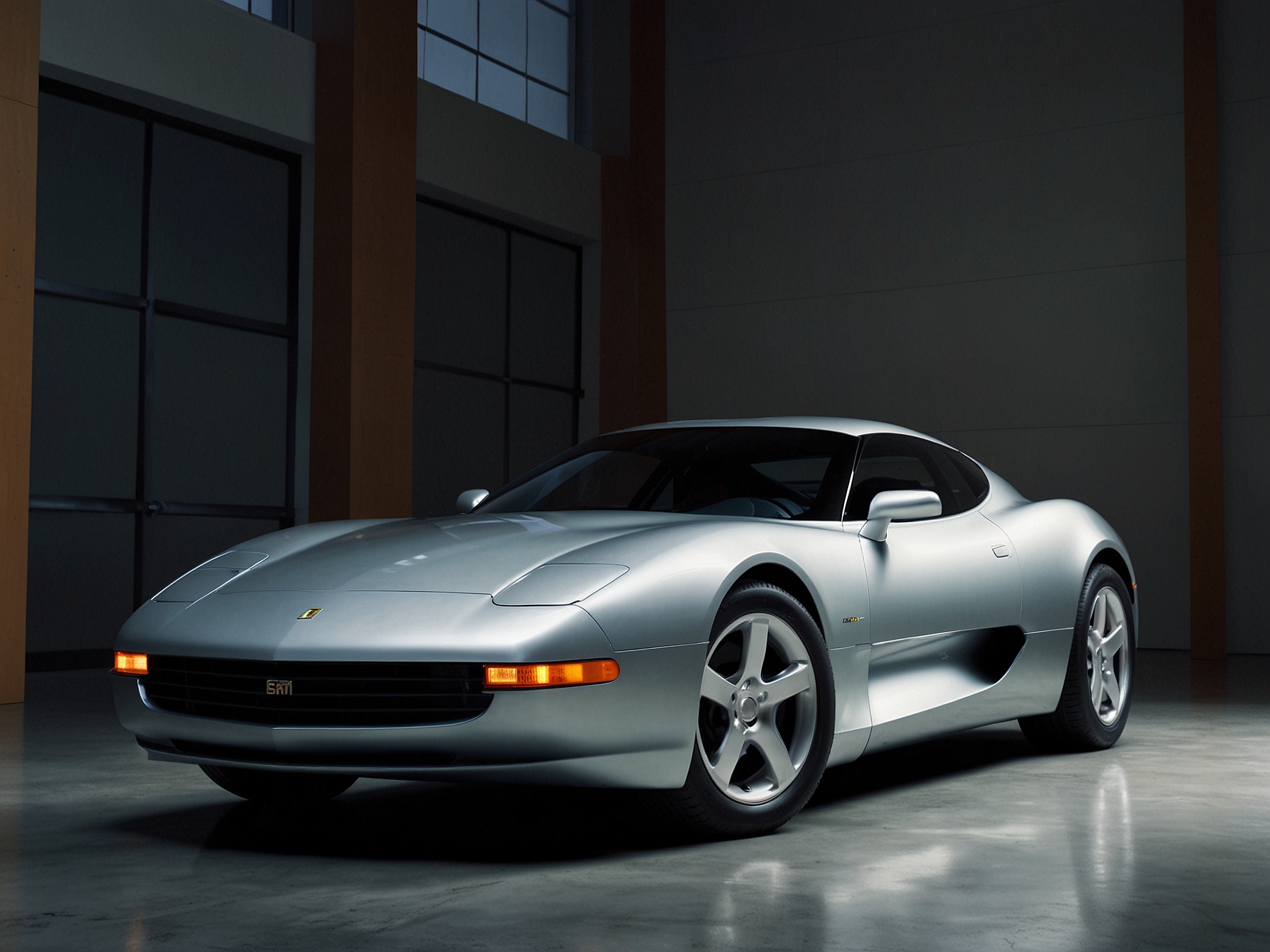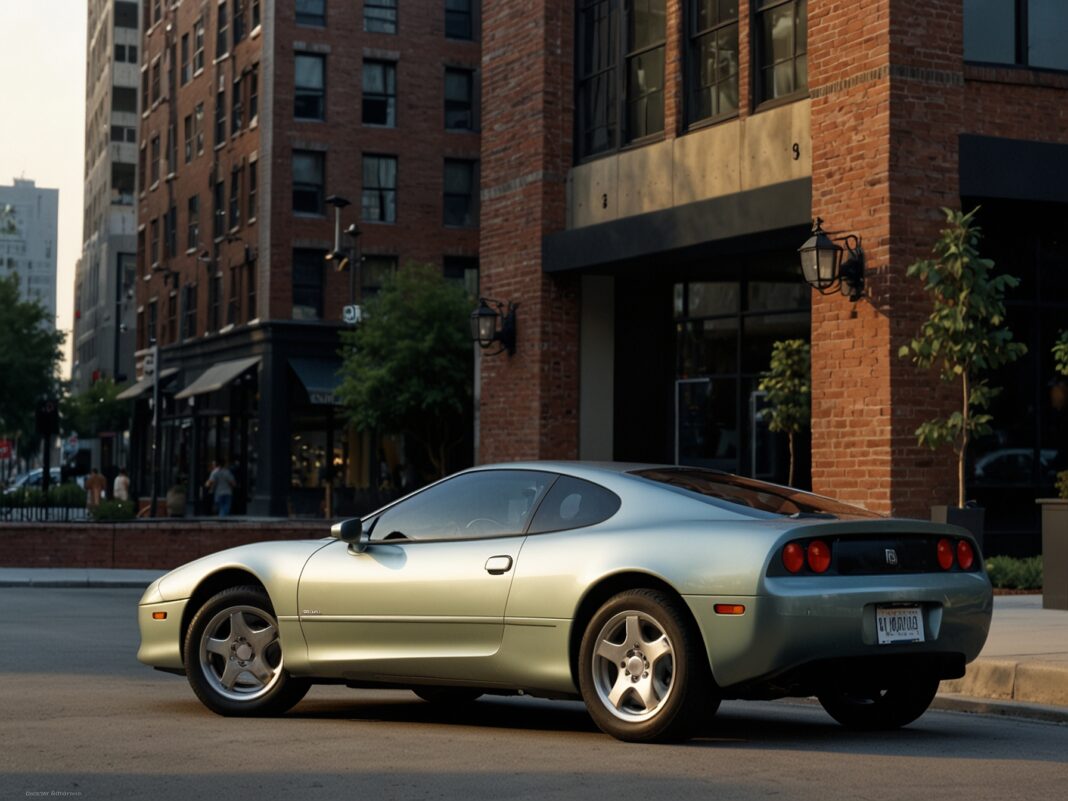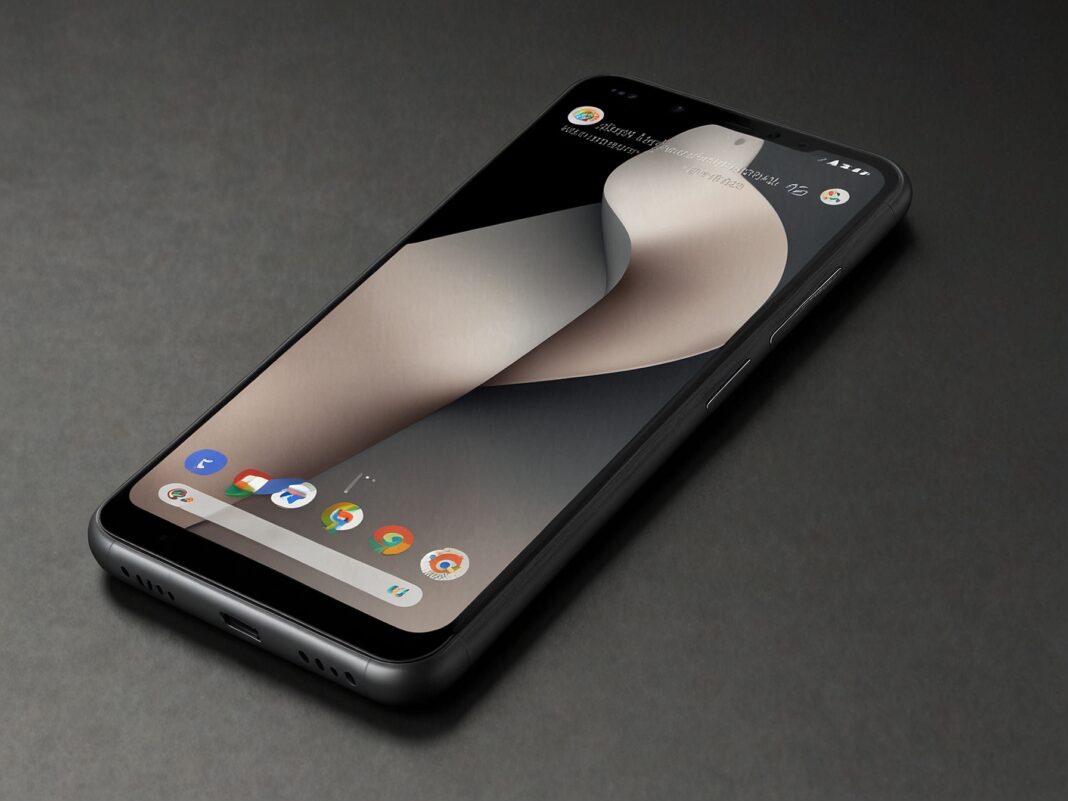Few cars have captured the popular imagination quite like the EV1, the pioneering electric vehicle that General Motors launched a generation ago. Approved for production in 1994 and released two years later, the EV1 wowed the auto industry, seduced the media, and seeded a community of passionate early adopters thrilled to drive a car that rendered gas stations obsolete. The EV1 wasn’t unique only because of its fuel source; the car also introduced many features, such as regenerative braking and drive-by-wire technology, that were transformative. “American automakers are criticized for not being innovative,” Bill Withuhn, a curator of the National Museum of American History, told Smithsonian Magazine in 2006. “But GM was way out ahead with the EV1.”

© FNEWS.AI – Images created and owned by Fnews.AI, any use beyond the permitted scope requires written consent from Fnews.AI
And then GM killed it. Despite a lengthy waitlist of prospective buyers, GM was losing tens of thousands of dollars on each EV1 it produced. Facing mounting pressure, the company in 2002 forced everyone who had been leased an EV1 to hand it over. GM crushed almost all existing EV1s into smithereens, in the process surrendering its global lead in EV development. A few years later, GM was bankrupt, and it wasn’t long before a different car company—one named after a certain Serbian inventor—became the EV revolution’s standard bearer. Had GM nurtured the EV1 instead of ditching it, the automotive industry might look very different today.
The EV1 was far from the first electric car produced in the United States. In fact, in 1900 the majority of new cars sold were electric; it was only in the 1910s that the gas engine emerged as the dominant method of vehicle propulsion. Even then, carmakers occasionally flirted with electric prototypes, but their performance generally underwhelmed. During the 1970s oil crisis GM unveiled the Electrovette, an electric subcompact that offered a range of 50 miles—as long as the driver drove no faster than 30 mph. It flopped. Nevertheless, GM remained sufficiently curious about clean cars to sponsor the Sunraycer, a solar-powered vehicle that won a zero-emissions race across the Australian Outback in 1987. Although GM relished the positive publicity, the company saw no future in solar-powered cars sold to the public. But a battery-powered car that capitalized on the Sunraycer’s aerodynamic design? Perhaps it was worth a shot.

© FNEWS.AI – Images created and owned by Fnews.AI, any use beyond the permitted scope requires written consent from Fnews.AI
A small team of GM engineers was soon scrambling to construct a sleek electric car that was intended as a demonstration project. But GM CEO Roger Smith stunned his colleagues when, on Earth Day 1990, he announced that the company would actually try to produce this car, which would be dubbed—and I am not making this up—the Impact. (Late night host Johnny Carson called it “the dumbest name you’ve ever heard for a car,” and wondered if the Impact would compete with “a new Ford Whiplash.”)
Regulators at the California Air Resources Board were watching closely, and they were seriously thrilled by GM’s announcement. To them, the Impact provided confirmation that electric vehicles were not some Jetsons-esque fantasy, but a realistic technology on the cusp of widespread adoption. Wielding power granted to California through recent amendments to the federal Clean Air Act, CARB soon announced that by 1998—eight years away—2% of automakers’ cars sold in California needed to be zero-emissions vehicles, with the share rising over time. New York and Massachusetts quickly announced plans to follow suit. Every major car company raced to produce electric cars that could meet CARB’s mandate (while simultaneously insisting that it was unrealistic and should be rescinded). Drawing on its years of experience, GM was the clear EV leader. During the 1990s, its Impact program generated a slew of technical innovations like drive-by-wire steering, electric-defrost windshields, and regenerative braking that have become industry standards.
“We were so far ahead,” says Arianna Kalian, who worked as an engineer on GM’s electric car program from 1990 to 1997, “not just in the EV powertrain but also in aluminum body structure technology and efficient vehicle systems.” But GM’s attitude toward its own project seemed at times schizophrenic. In his book, Shnayerson shared an internal note that GM chairman John Smale wrote after test-driving an Impact: “I ruminated [with colleagues] about the dilemma we face in trying to manage on one hand expressing the pride and confidence we feel in this revolutionary product as it begins to be exposed to consumers, while on the other hand we try to persuade authorities not to go off the deep end.”
Smale’s queasiness was understandable. Because GM would inevitably lose tens of thousands of dollars on every Impact, the company had a clear financial incentive to fight CARB’s mandates. Facing enormous pressure from GM and its competitors, CARB blinked in March 1996: The dreaded 2%-zero-emissions mandate for 1998 was canceled. Just three weeks later, GM finally announced that its electric car was ready for customers, a move that, as Shnayerson noted, “would seem linked, like a quid pro quo deal,” though GM vehemently denied it. Renamed (mercifully) the EV1, GM’s electric car would be available through leases costing $399/month, equivalent to roughly $733 today (leasing allowed GM to cover maintenance costs such as battery replacement). Weighing around 3,000 pounds, the EV1 was the lightest car GM had ever built, helping it to achieve a then-stunning range of around 80 miles between charges in warm weather.
“The market areas were California and Arizona, and not Michigan,” says Chelsea Sexton, who worked for GM as an EV1 specialist from 1996 to 2001. “None of us ever thought this was a car for everybody. It was a car for a specific number of people, just as any car today is not the car for everybody.” The EV1 “would have been tricky as your only car, given the limited range,” says Patrick George, editor-in-chief of InsideEVs, a media outlet focusing on electric cars. “But it was very popular as a family’s second or third car.” Auto journalists who drove the EV1 in the 1990s were effusive in their praise. The vehicle “proves to be the start of something big,” raved Car and Driver. The EV1 was “practical, fun to drive, and a master stroke of engineering,” according to Popular Mechanics. “Brilliant,” declared Motortrend.
Sexton, who was responsible for the EV1’s Southern California market, worked with celebrities like Danny DeVito, Jay Leno, and Suzanne Somers who wanted one for themselves. She says that many drivers felt personally responsible for buttressing the EV1’s reputation. “They loved it so much that when the car would break down on the freeway, some of them wouldn’t call tow trucks because they didn’t want the image of an EV1 on the back of one,” she says, laughing. GM, that lumbering industry behemoth, had created something genuinely amazing. But the company remained wary of its own innovation.
In 1996, GM produced a television ad for the EV1 with none of the vehicle close-ups and photogenic actors that are standard fare in car marketing. Instead, the ad shows human shadows projected on concrete, with ominous chanting in the background. In a tone that might be described as “spooky,” the voice of an unseen older woman poses questions (“How does it go without sparks and fire?”) without offering answers. The EV1 itself appears, partially, only during the last five seconds of the 45-second clip, and even then, a viewer can barely discern what it is. It was a strange approach toward selling cars. Of course, GM had reasons to mute its own sales pitch, since the EV1 was not coming close to covering its costs.
As Shnayerson describes in his book, the vehicle remained controversial among the company’s executives, particularly those keeping a close eye on its bottom line. And so GM limited the EV1’s production, with only around 1,100 EV1s produced and leased to customers, although Sexton said that waiting lists exceeded 5,000 names in California alone. As profits fell in 2002, GM shocked EV1 customers by demanding that they surrender their leased EV1s to the company. Enraged, a group of owners staged a protest outside a parking lot where the EV1s were stored, even holding a mock funeral for their beloved car that was led by a somber Ed Begley, Jr. That saga played out in Who Killed the Electric Car, a 2006 documentary.
“There is an extremely passionate, enthusiastic and loyal following for this particular vehicle,” a GM spokesman told The Washington Post in 2005. “There simply weren’t enough of them at any given time to make a viable business proposition for GM to pursue long-term.” Instead, he said, the company would focus on building cars powered by hydrogen fuel cells (a bet that has not paid off, to put it mildly). Looking back, Sexton acknowledges that the EV1 was a money-loser, but she still bristles at GM’s justification for pulling the plug. “Had GM simply said, ‘we’ve chosen as a business decision to end the program,’ there never would have been protesting,” she says. “The ‘self-inflicted wound’ aspect of this was the tack GM chose to take: ‘We tried as hard as we could, but we could not get anyone to want it.’”
Although scrapping the EV1 saved GM money in the short term, its strategic costs are hard to quantify. In Who Killed the Electric Car, Tom Everhart, a former CalTech president and GM board member, said, “The reason for the EV1 was to give GM a very big head start on how you transform electricity into the drive power of the car. It would give them two-to-three-year lead. In my judgment, It did. And my frustration is that they did not capitalize on their lead.” Today, only a handful of EV1s survive, mostly in museums such as the Smithsonian and the Henry Ford Museum.” Nevertheless, the little car left quite a legacy.
Among those incensed by the EV1’s demise was Elon Musk. “I expected there would be an EV2 and EV3 and so forth,” Musk said at a conference last year. “Had [GM] done that, actually there would have been no need for Tesla.” GM, he said, “would have been the leader in electric vehicles today.” Instead, just months after GM killed the EV1 Martin Eberhard and Marc Tarpenning founded Tesla Motors. A few months later, Musk joined the company’s board and soon became its CEO. Today, Tesla’s market valuation is 10 times GM’s.
GM, for its part, entered the darkest chapter of its storied history soon after terminating the EV1. In 2009 the company declared bankruptcy, relying on a federal bailout to stay afloat. Rick Wagoner, the executive who made the call to scrap the EV1, was eventually pressed to resign as CEO by the White House (in an ironic twist, Wagoner later joined the board of an EV charging company). The EV1 would not be the last climate-friendly vehicle that GM seemed to cancel prematurely. In 2019, the company nixed the Chevy Volt, a hybrid sedan, despite its numerous awards and a passionate customer base. Now, with hybrids receiving renewed attention as EV sales have slowed. The Verge has called for bringing the Volt back while Kirsten Korosec, a TechCrunch reporter, said on the Autonocast podcast that “it was very dumb of GM to get rid of [the Volt]. They should have continued it.”
GM also killed its Ariv e-bike in 2020, a year in which US e-bike sales surged 145%, and last year announced it was scrapping the Bolt, an unusually affordable and modest-sized EV, until the company subsequently backtracked. It’s now hard to miss the contrast between the petite, stylish EV1 and the hulking, gigantic electric cars that GM sells to consumers, such as the Hummer EV that tips the scales at over 9,000 lbs (equivalent to three EV1s). Electric car bloat has been a boon for GM, along with Ford and Stellantis (owner of the Dodge and Chrysler brands), since carmakers collect juicier profits from huge SUVs and trucks than from sedans. But the meteoric rise of affordable, sporty electric sedans from China is now sowing fear throughout Detroit—and pushing the big US automakers to relearn how to build smaller cars. Had GM stuck with the EV1, the company might face an easier learning curve.
The EV1 story may be a frustrating one for GM, but many of its broader lessons are inspiring. CARB’s regulators, for instance, seized an opportunity to make transportation—the single largest source of greenhouse gases in the US—a bit less damaging to the planet. “It shows how regulations can drive positive change—which is very much not a popular opinion in the [car] business,” said George. Sexton agreed, maintaining that CARB “does not get nearly enough credit for the fact that companies like Tesla now exist.”
And GM demonstrated, perhaps unwillingly, that a subset of consumers can fall deeply in love with electric cars. “Everything that Tesla gets credit for—the passion of their owners—actually started with EV1,” said Sexton. “The car clubs, the cross country, road trips—all of that stuff.” Even though GM abandoned its opportunity to lead the auto industry into an electrified era, George believes that the company had exactly the right instincts when it developed the EV1 thirty years ago. “Americans want smaller, affordable cars and they want to break up with gasoline if you make it easy to do and you make it cheap enough. I think that’s part of the EV1’s legacy” he says. “I often wonder what would have happened if GM had been able to keep it going.”
Was this content helpful to you?





